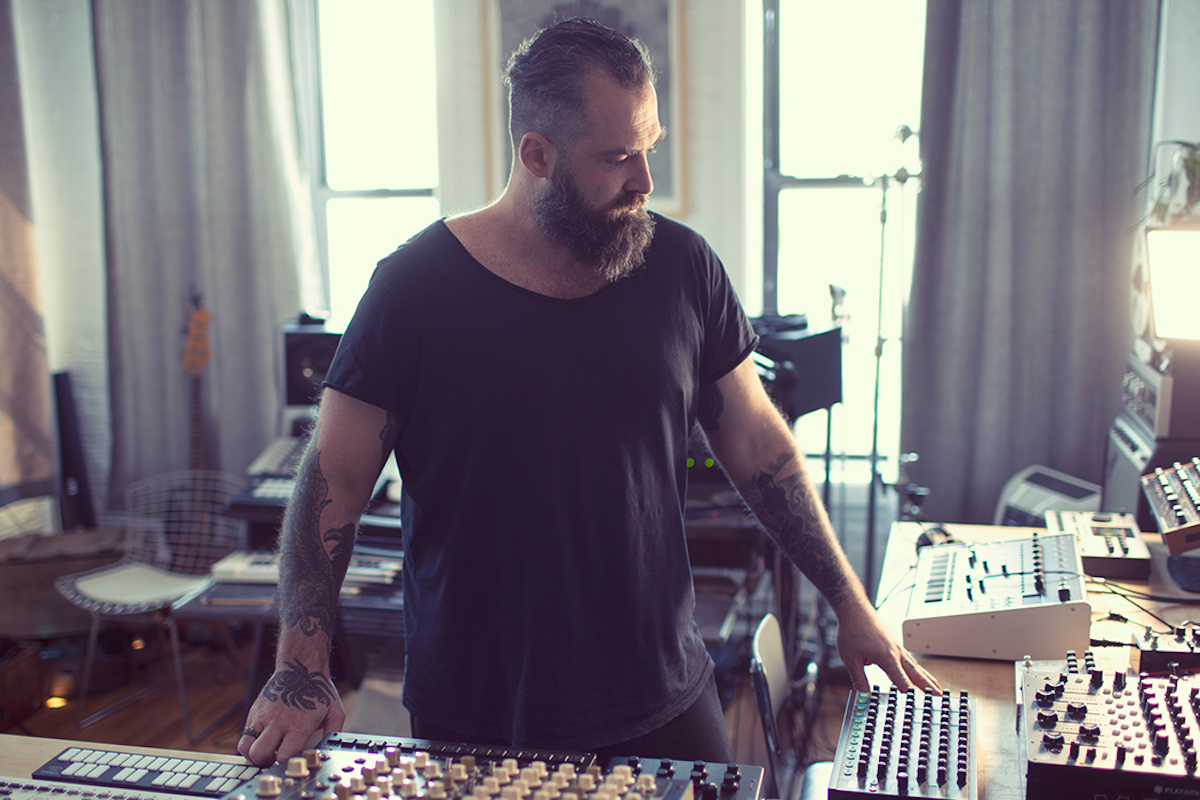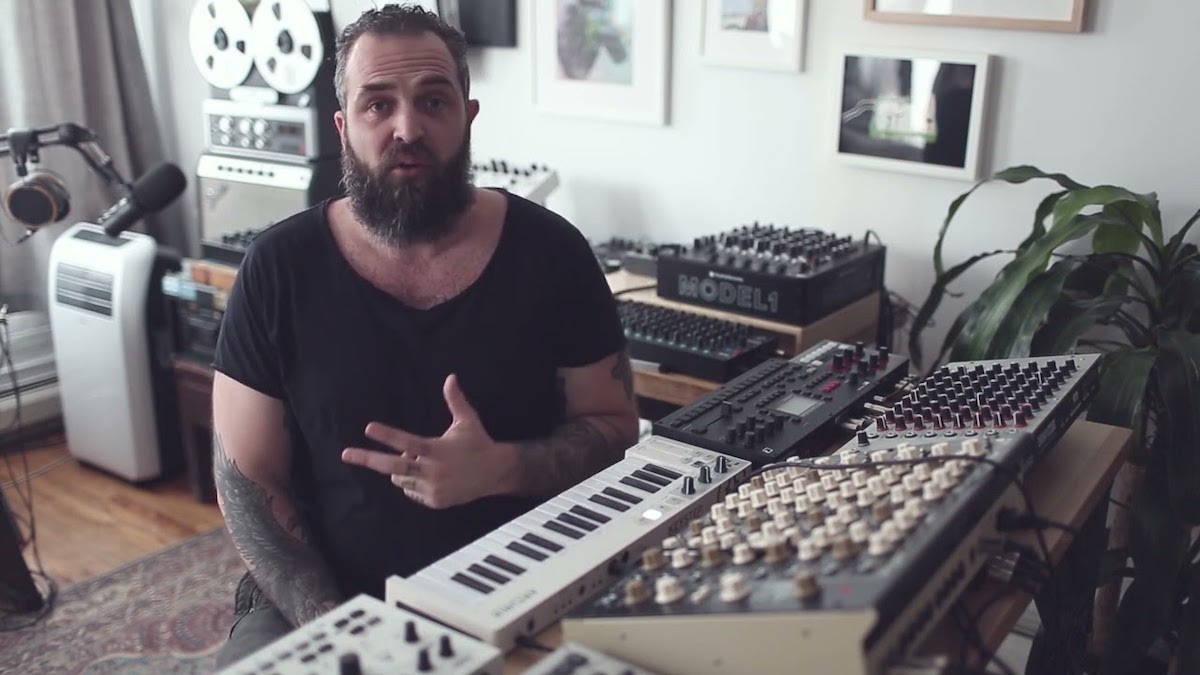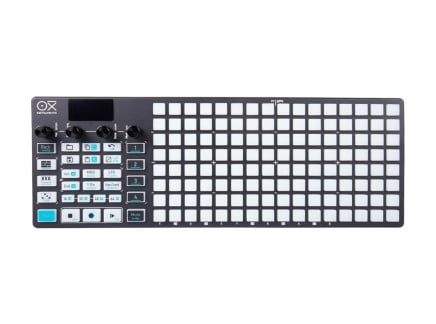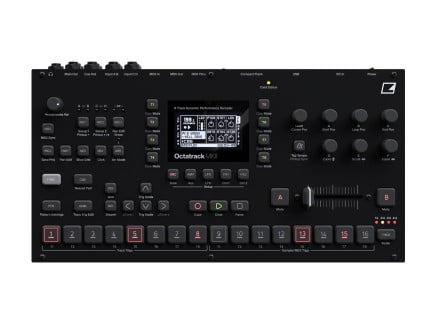With countless releases and remixes under his belt—not to mention film and commercial work—it feels safe to say that Federico Chiesa is a prolific composer. But not only that: over the last couple of years, he's developed a rich following through YouTube and Patreon. If you're not familiar with his given name, you might recognize his artist name, Oora.
The OoraMusic YouTube channel has published tons of gear reviews, technique-based videos, jams, and inspirational content. His channel offers expert tips on integrating various desktop, modular, and MIDI gear into performance and production environments. More recently, he's also begun producing videos about composition, technique, and creativity...and these insightful looks into his creative thought reveal that he's much more than just a GearTuber. He's a thoughtful musician and composer with a wealth of practical and potent creative insights.
We recently teamed up with Oora and Torso Electronics to give away a T-1 algorithmic sequencer—a device which Oora has quite expertly adopted into his own music-making workflow. As such, we decided to reach out to talk to him about music, diving into his inspirations and, in particular, his thoughts about the T-1. Be sure to head to our contests page for a chance to win your own T-1...and read on for more insight into Oora, Torso, and more.
Oora: Background + Inspiration

Perfect Circuit: Hey Oora! Thanks for talking with us. Many are familiar with your YouTube channel, but we're curious to know—can you briefly explain how you got your start making music? How did electronic music first make its way into your life? When/how did it become a primary part of your practice?
Oora: Thanks for having me! I’ve been interested in music since my childhood, it has always been my safe place. I have been in a few bands and toured as a singer and guitar player for a while, but when things got a bit ugly with my latest band I decided to learn how to produce electronic music and rely only on myself. Synths and sequencers became my way to meditate.
It was only during covid time that I decided to focus on a “career” in music, and things picked up nicely since then.
PC: Where did you look for inspiration during your development as an electronic musician?
Oora: I have always been fascinated by minimal approaches in the arts. I have three artists that really influenced my beginning: Alessandro Cortini, Andreas Tilliander (TM404), and Richie Hawtin (Plastikman). Alessandro for the melodies and simplicity, Andreas for the inspiring use of Roland boxes, Richie for the mastery in minimal arrangements.
I never had a real mentor, which is something I am sad about, but now I have a great community around me, and I have the chance to discuss music and production all day long.

PC: How would you describe your practice today? What are your primary musical interests/artistic concerns? How does your current workflow/toolkit contribute to your exploration of those interests/concerns? Along those lines, what tools (hardware, software, etc.) are integral to your current practice and why?
Oora: I spend most of my days in a studio at Riverside in Berlin. I juggle between music production, video production, and mentoring. My main interest is communicating through the voice of creativity. I am interested in a simple, honest and unsweetened approach to music.
I am proficient with hardware instruments, mostly. The staples of my studios are Elektron Octatrack, Vermona Perfourmer, Elektron Analog Rytm, a Zahl Desk, Oxi one, and of course Torso T-1.
Talking about the Torso T-1
PC: We know that you've used the T-1 a lot—and we absolutely love it, too. Given that you're quite a prolific player with the T-1, we were curious to pick your brain about it specifically. From our perspective, it is a fantastic way to start a fresh project: it generates melodies, rhythms, and chord changes with ease. How often do you find yourself using this as the foundation of a piece? Or have you found it more valuable as something that augments an existing structure?
Oora: I usually use one sequencer for each composition. Somehow I find myself working differently depending on the tool I have in front of me. What I love about the T1 is the interesting dialogue that happens between man and machine. It is pretty unique how the T1 translates ideas and adds its personality to those.
Usually, if I start a piece using the T1 I will stick with that for all the sequencing needs. I believe that it is a machine that requires a sort of connection, so for me it works only if I center the setup around it.
It is a killer instrument also when I feel uninspired: through the randomization features it always sparks creativity and excitement.
PC: Euclidean motion and polyrhythms are easily created using this sequencer. Have you found yourself using it more for drums and percussion, melodies, or both?
Oora: Both. Obviously it is a kind of sequencing that really shines on drums, but I love it also on plucky sounds (mallets or gamelan kind of sounds). Uneven counts of steps became something I use constantly in my composition, even at a macro level. On the T-1, for example, I like to mess with lengths of cycles, interrupting a sequence, and creating imbalances that resolve after few other cycles.
PC: We've used it a lot at Perfect Circuit for multi-timbral MIDI synths, hybrid setups, and just as a modular sequencer. Do you have a preferred setup? Is there a setting where the T-1 excels where other sequencers do not?
Oora: I love pairing the T-1 to the Nord Drum or Elektron Machinedrum to create tonal percussion, for example. It is amazing how easy and fast it is to create some interesting ideas. It is really nice on the vermona perfourmer too.
I’d say that it complements nicely any setup.
PC: Hardware aside, it's a really powerful DAW-based MIDI controller. Have you used it in such a manner? Do you think it performs well for someone who only uses soft-synths?
Oora: Lately it became the bridge between my hands and the VSTs I love. I am working a lot with Slate + Ash stuff, and it is super fun to use T-1 to sequence and do some crazy stuff with CC.
With Ableton it is super simple to set it up and I love that works over wifi.
PC: Getting in the weeds a bit, how do you like to perform with the T-1? Playing with the Range and Voicing is a great way to get new evolutions. Are there any fun tricks you've found that you can share?
Oora: I mostly use it as a composing tool. I got so proficient that I can set up a pattern in few seconds. I love the TEMP function when performing in conjunction with Pattern key: it is somehow similar to CTRL ALL on some Elektron boxes. I can really go in crazy directions, and as soon as I depress TEMP, all goes back to normal. Super fun.
PC: In December, Torso released a massive update that added a huge amount of features and control. The CC control is an amazing option, and the ability to sequence the pitch like a "normal" sequencer is handy. Torso is incredibly receptive to customer feedback: is there something you'd like to see them add?
Oora: They are the nicest, I am super grateful talented people like them exist.
I think it would be cool to have a modality in which you can use the knobs as simple CC controllers (like Shik N32 or Faderfox PC12), decoupled from the sequencer part. So you can switch on and off of it and have your encoders mapped to different MIDI channel and CC all in front of you (you can already do it, but you have to select a track and a single MIDI channel).
In a MK2 I would love to have a battery, would be super convenient.
PC: Are there any particular situations in which you definitely would or would not recommend the T-1 to someone?
Oora: Hard to say, because each person has a different approach. T-1 needs some time to get used to it, but it rewards your patience immensely. If you are looking for your first bread and butter sequencer maybe there are better alternatives, but if you want to add something truly unique to your arsenal, then T-1 is a great choice.
What's Next?
PC: The Torso T-1 aside, what are a couple of places you've recently been looking to for inspiration that you'd like to share with others?
Oora: I just moved to Berlin and opened a studio at Riverside Studios Berlin. I am surrounded by great artists and this is something that inspires me every day. I am also thinking a lot about music and photography (I used to be a photographer), and how the two arts overlap.
PC: What are you working on next? Where do you see your work/practice leading in the future?
Oora: I am working on a new album, a few scores and I am thinking of writing a book about creativity (you heard me Rick Rubin?? :D ). I’d love to play more festivals and definitely work more as movie composer.
PC: Where should people go to keep up with your work?
Oora: Instagram, Patreon, and YouTube are the places where you can be in touch with me!














